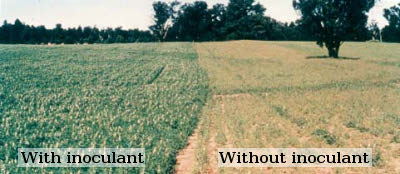As an experimental organic gardener, I have been spending a lot of time reading up on the symbiotic relationships between plants and microbes– particularly bacteria and fungi. I have learned that plants actually communicate to these microbes (by secreting chemicals, for example) and depending on the message they send out, they attract beneficial microbes and get these microbes to go out and get the nutrients required for plants.

We permaculture practitioners learn about the benefits planting nitrogen-fixing flora to support the growth of their neighbours, but you can’t just go out and plant a pea crop or acacia and expect that the supporting fungi will be alive in the ground ready to attach to your vegetable or tree’s root systems. This is because in many cases, the symbiotic relationship is very specific to a certain strain. You need therefore need to introduce the correct microbes into the soil, preferably getting them in direct contact with the roots at planting time and then making sure the soil never dries out.

Not only do the plant roots get the nutrients delivered to them by these microbes, but they are presented in a ‘bioavailable’ form that the plant can use. In addition, it is common for fungi to hold on to minerals (e.g. phosphorous, lime) that would otherwise be leached out of the soil, so you can greatly reduce your overheads by getting these little helpers into your soil.
I have decided to give compost tea a try and now how all the required items in hand, minus my order of Casuarina seedlings which are on hold due to a heat wave here in Australia. I will be running my first brew as soon as the trees arrive, so stay tuned as I document the whole experience.
If you have some experience with this, I would love to hear your feedback/advice!
Suggested reading:
